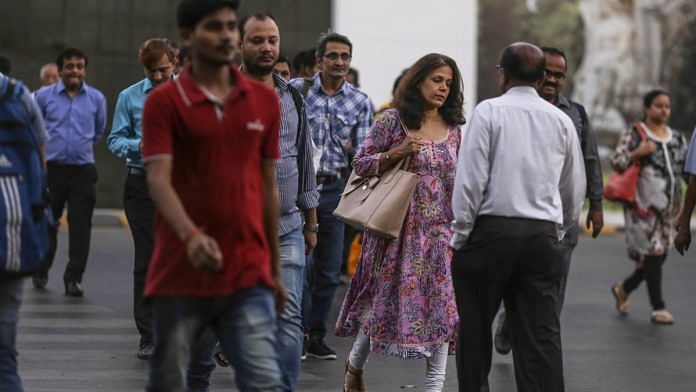United Nations: India’s population grew at an average annual rate of 1.2 per cent between 2010 and 2019 to 1.36 billion, more than double the annual growth rate of China, according to a report by the United Nations Population Fund.
India’s population in 2019 stood at 1.36 billion, growing from 942.2 million in 1994 and 541.5 million in 1969.
India’s population grew at average annual rate of 1.2 per cent between 2010 and 2019, the UN sexual and reproductive health agency said in the State of World Population 2019 report.
In comparison, China’s population stood at 1.42 billion in 2019, growing from 1.23 billion in 1994 and 803.6 million in 1969.
China’s population grew at an average annual rate of 0.5 per cent between 2010 and 2019, the report said.
According to the report, in India, total fertility rate per woman was 5.6 in 1969, dropping to 3.7 in 1994 and 2.3 in 2019.
India recorded an improvement in life expectancy at birth. The life expectancy at birth in 1969 was 47 years, growing to 60 years in 1994 and 69 years in 2019.
Giving a snapshot of India’s population composition in 2019, the report said 27 per cent of the country’s population was in the age bracket of 0-14 years and 10-24 years each, while 67 per cent of the country’s population was in the 15-64 age bracket.
Six per cent of the country’s population was of the age 65 and above.
Indicative of the improvement in the quality of India’s health care system, the report noted that Maternal Mortality Ratio (MMR) in the country dropped from 488 deaths per 100,000 live births in 1994 to 174 deaths per 100,000 live births in 2015.
Director of UNFPA Geneva Monica Ferro said the figures were “worrisome” and it was essential to raise the level of consent and access to vital health services for millions of women around the world.
“Don’t forget: each one of these numbers is a person,” she said.
The findings, relating to women aged between 15-49 years, were published for the first time as part of United Nations Population Fund’s (UNFP) State of World Population 2019 report.
The report includes, for the first time, data on women’s ability to make decisions over three key areas: sexual intercourse with their partner, contraception use and health care.
According to the analysis, the absence of reproductive and sexual rights has a major and negative repercussions on women’s education, income and safety, leaving them “unable to shape their own futures”.
Early marriage continues to present a major cultural obstacle to female empowerment and better reproductive rights, the UNFPA report said.
“A girl who marries when she is 10 will probably leave school. And because she leaves school, she won’t get the negotiating skills, and she won’t get the specific skills which will allow her to then get a better-paid job, Ferro said.
Those women and girls left behind “are typically poor, rural and less educated,” Ferro said, adding that “two-thirds of all maternal deaths today occur in sub-Saharan Africa”.
Despite these concerns, the UNFPA report highlights that “untold millions” have enjoyed healthier and more productive lives in the 50 years since the agency was founded, thanks to pressure from civil society and governments to dramatically reduce unintended pregnancies and maternal deaths.
Highlighting positive changes in the last half-century, the report shows that in 1969, the average number of births per woman was 4.8, compared with 2.9 in 1994, and 2.5 today.
Looking ahead to future challenges, the UN agency highlights the threat to women’s and girls’ reproductive rights posed by emergencies caused by conflict or climate disasters.
About 35 million women, girls and young people will need life-saving sexual and reproductive health services this year, as well as services to address gender-based violence, in humanitarian settings, it warns.
“Every day, more than 500 women and girls including in countries with emergency settings, die during pregnancy and childbirth, due to the absence of skilled birth attendants or emergency obstetric procedures,” Ferro said.
Also read: Indian women are seeing motherhood as a task, not a goal & that could lower our population




After ‘nasbandi’ campaign no Indian politician has ever had the guts to speak the ‘P’ word. So those actively procreating should also pray to God that Himalayan glaciers don’t melt.